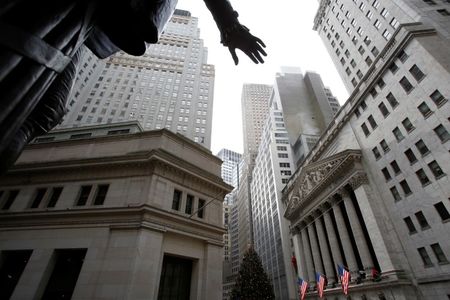
Top 5 things to watch in markets in the week ahead
Investing.com — U.S. employment data on Friday will be the main highlight of this week’s economic calendar amid hopes the economy is on course for a soft landing. The second quarter gets underway after a stellar performance for stocks in Q1. The yen and the yuan remain on intervention watch while data out of the Eurozone and China will be closely watched. Here’s what you need to know to start your week.
Nonfarm payrolls
Friday’s jobs report will be in the spotlight amid investor confidence that the economy is set for a “soft landing”, in which inflation moderates but the economy avoids a severe downturn.
The U.S. economy is expected to have added 205,000 jobs in March, slowing from the 275,000 jobs added in February.
Hopes for a “soft landing” for the economy were boosted after the Fed at its March meeting stuck to its view of three rate cuts this year while upgrading its outlook for economic growth.
Ahead of the jobs data, investors will also get a chance to hear from several Fed officials including Fed Chair Jerome Powell on Wednesday. Among others due to make appearances are New York Fed President John Williams, San Francisco Fed head Mary Daly and Richmond Fed head Thomas Barkin.
Q2 kicks off
The U.S. stock market has had a strong start to the year, boosted by optimism over artificial intelligence related stocks and expectations the Fed will begin to cut interest rates this year.
Each of the three main U.S. indexes recorded solid quarterly gains, led by a climb of over 10% for the S&P 500 for its biggest first-quarter gain since 2019.
Whether that rally continues into the second quarter is largely down to the Fed. At the start of the year markets had been expecting six rate cuts from the Fed – now just three are priced in and officials have not yet signalled that inflation has come down enough to justify a rate cut.
Continued strong momentum will also depend on corporate earnings which get underway in earnest the second week in April.
Intervention watch
Monetary authorities in Japan and China are on high alert as their currencies weaken past levels that they’ve been defending for months, largely thanks to the strong dollar.
With the yen faltering towards the 152 per dollar level and the yuan struggling to break above the stronger side of 7.2 per dollar, officials have stepped up efforts to bolster their currencies.
In Japan, that means verbal warnings, while in China it has been state banks buying yuan and selling dollars.
Given how much the two big Asian currencies have fallen, there’s a growing school of thought that Beijing could have grown more tolerant of a weak yuan to maintain its competitive edge against the yen but it’s hard to say what’s next.
Eurozone inflation
The Eurozone is to release flash inflation data for March on Wednesday that will be closely watched amid speculation that the European Central Bank is gearing up to cut rates in June.
Inflation in the euro area remained high since the start of the year and needs to fall further to allow the ECB to deliver a summer rate cut, making the next three inflation reports key for markets (and the ECB).
If inflation surprises to the upside, rate cut bets will be pushed out.
Speaking Saturday, ECB Governing Council member Robert Holzmann said it could lower its key interest rate before the Fed, noting that the European economy was growing more slowly than its U.S. counterpart.
China data
China’s manufacturing activity expanded for the first time in six months in March, according to official data published on Sunday, offering relief to policymakers even as a crisis in the property sector remains a drag on the economy and confidence.
Expectations are for Monday’s Caixin manufacturing PMI to show a slight expansion, likely continuing its divergence with the official reading – overall offering a mixed outlook for the world’s No.2 economy.
Policymakers have wrestled with persistent economic sluggishness since the abandonment of COVID curbs in late 2022, amid a deepening housing crisis, mounting local government debts and weakening global demand.
(Reuters contributed reporting)

